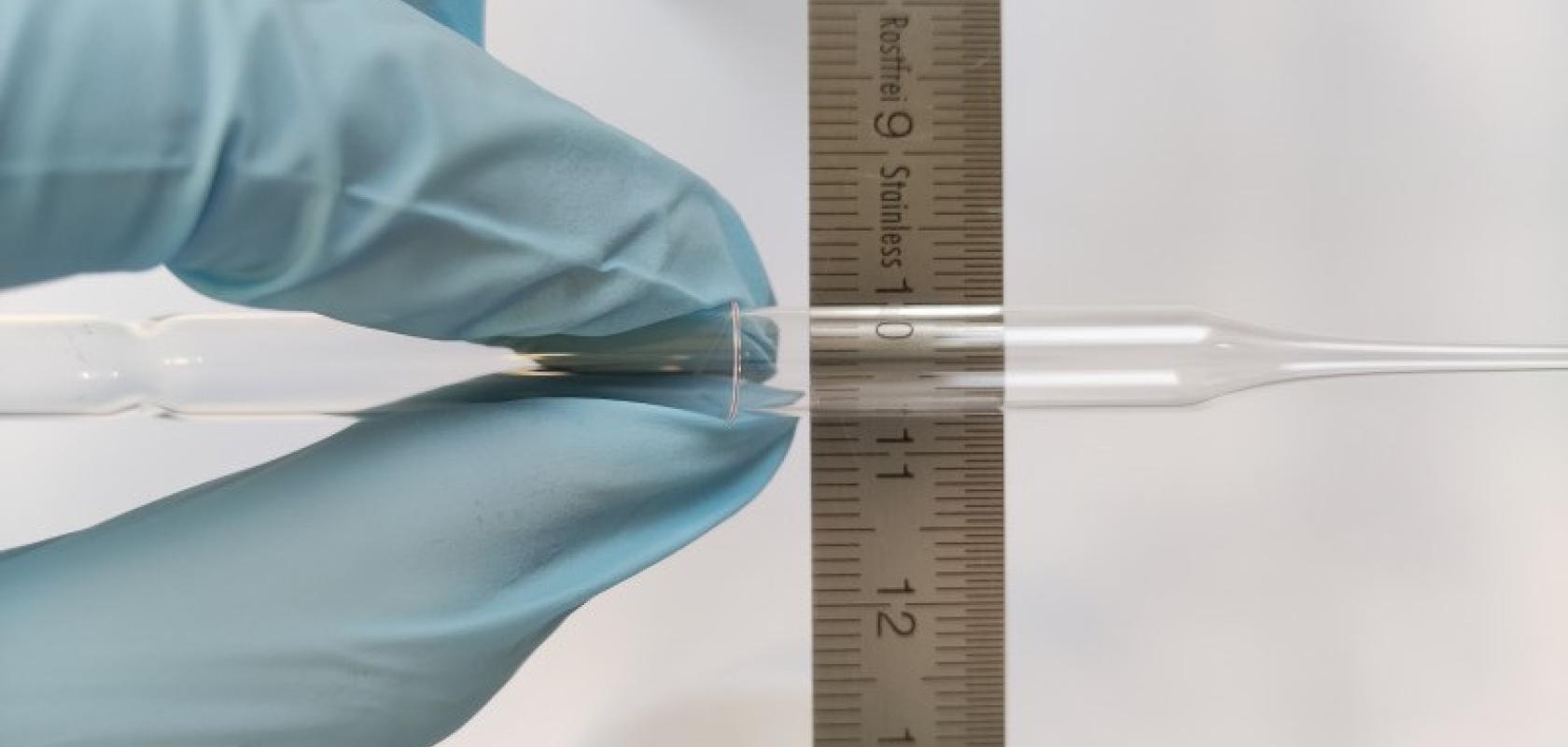The fibre could be used to speed-up broadband delivery, improve medical imaging or even make solar powered clothing.
A research team led by Dr Lei Su, Reader in Photonics at Queen Mary University of London have invented a brand-new application of perovskites as optical fibres. Due to their very high efficiency in transporting electric charges from light, perovskites have become known as the “next generation” material for solar panels and LED displays.
While most of today’s optical fibres are made of glass, the perovskite optical fibre made by Dr Su’s team consists of just one piece of a perovskite crystal. They have a core width as low as 50μm (the size of a human hair) and are very flexible – they can be bent to a radius of 3.5mm.
Compared to their polycrystal counterparts, single-crystal organometallic perovskites can be more stable, more efficient, more durable and have fewer defects. The researchers have been looking to make single-crystal perovskite optical fibres that can bring this high efficiency to fibre optics.
The team was able to grow and precisely control the length and diameter of single-crystal organometallic perovskite fibres in liquid solution by using a new temperature growth method. They gradually changed the heating position, line contact and temperature during the process to ensure continuous growth in the length while preventing random growth in the width. Using this method, the length of the fibre could be controlled, and the cross section of the perovskite fibre core could be varied.
In line with the team’s predictions, due to the single-crystal quality, the fibres demonstrated good stability over several months, and a small transmission loss – lower than 0.7dB/cm, sufficient for making optical devices. They also have high flexibility, meaning that they can be bent to a radius as small as 3.5mm, and larger photocurrent values than those of a polycrystalline counterpart.
Dr Su says: “Single-crystal perovskite fibres could be integrated into current fibre-optical networks to substitute key components in this system – for example in more efficient lasing and energy conversions, improving the speed and quality of our broadband networks.”
The technology could also have uses in other applications such as medical imaging as high-resolution detectors thanks to the small diameter of the fibre, which can be used to capture a much smaller pixel. They could also be used in textiles that absorb the light to create solar powered clothing.


